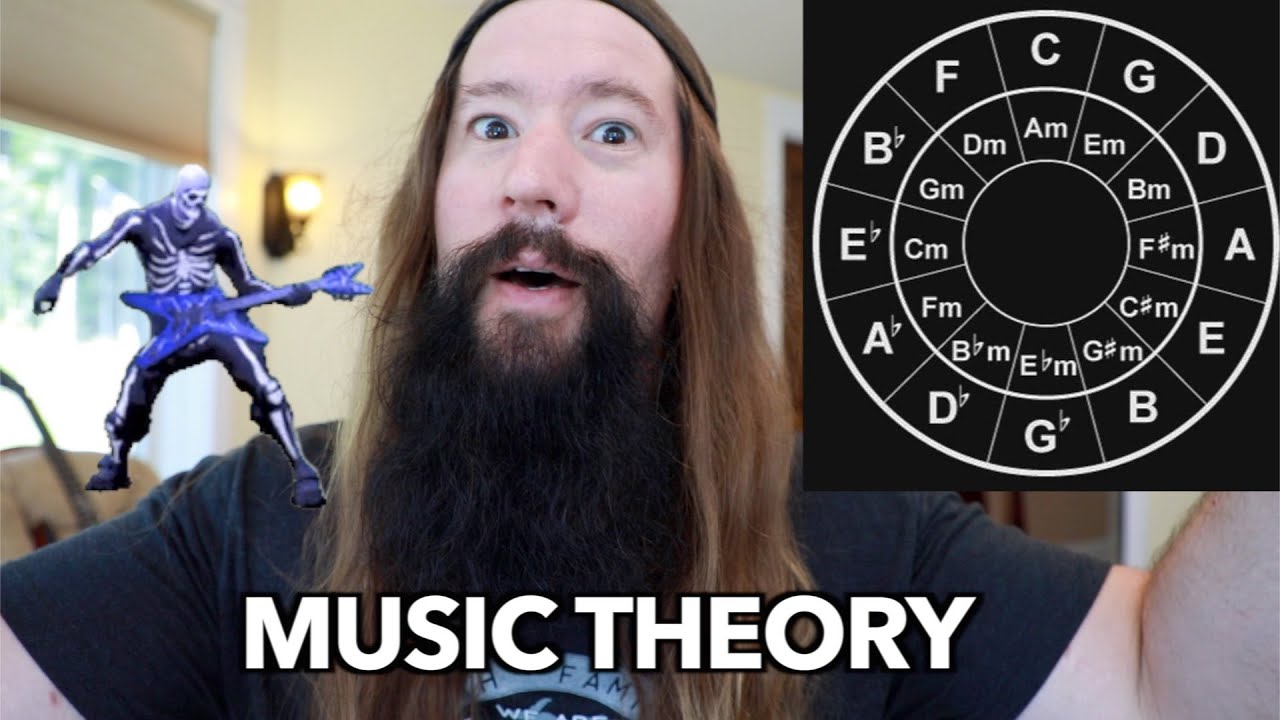Curso de Teoria Musical - Aula 04: Como Montar Acordes Maiores e Menores l Aula #50
Summary
TLDRIn this lesson on music theory, the instructor explains how to construct major and minor chords using scales. By selecting the 1st, 3rd, and 5th notes of a scale, students can form major chords, while lowering the 3rd note by a half-step creates minor chords. The video provides examples with the C major and G major scales, demonstrating how these chords are formed on the guitar. The instructor emphasizes the importance of practicing scales and understanding chord construction to play various chord voicings and progressions. The next lesson will cover more advanced chords like augmented and diminished chords.
Takeaways
- 😀 A **note** is a single sound, while a **chord** is a combination of multiple notes played together.
- 😀 A **major chord** is built by combining the 1st, 3rd, and 5th degrees of a scale.
- 😀 To form a **minor chord**, you lower the 3rd degree of a major chord by a half-step (semitone).
- 😀 **Chord inversions** occur when the bass note of a chord changes, but the other notes stay the same.
- 😀 **C Major chord**: Uses the notes C, E, and G (1st, 3rd, and 5th degrees of the C major scale).
- 😀 **G Major chord**: Built using the notes G, B, and D, following the same principle as other major chords.
- 😀 Minor chords are similar to major chords, but the 3rd note is lowered (e.g., C minor uses C, E♭, and G).
- 😀 The lesson explains the importance of knowing how to form chords on different instruments, such as guitar.
- 😀 **Extended chords** like **seventh chords** add extra notes beyond the basic triad (e.g., 7th, 9th degrees).
- 😀 **Scales** are crucial for building chords, and knowing the scale helps in identifying the right notes for the chords.
- 😀 The teacher emphasizes practical exercises, such as creating new chords and playing them on your instrument for hands-on learning.
Q & A
What is the main focus of this music theory lesson?
-The main focus is on understanding how to form major and minor chords using scales and intervals.
How does a note differ from a chord?
-A note is a single sound, while a chord is a combination of multiple notes played together.
How do you form a major chord from a scale?
-To form a major chord, you combine the 1st, 3rd, and 5th notes of a scale. For example, in the C major scale, the notes C, E, and G form the C major chord.
What is the difference between a major and a minor chord?
-A major chord is formed by the 1st, 3rd, and 5th degrees of a scale, while a minor chord is formed by lowering the 3rd degree of the major chord by a half-step.
Can you explain the concept of chord inversions?
-Chord inversions occur when the order of the notes in a chord is changed, meaning a different note becomes the lowest note. This affects the chord's voicing but does not change its fundamental structure.
What is the significance of the third degree in a chord?
-The third degree is crucial in determining whether a chord is major or minor. In a major chord, the third is a major third (4 semitones), while in a minor chord, the third is lowered by a half-step (to a minor third, 3 semitones).
How do you form a minor chord from a major scale?
-To form a minor chord from a major scale, you take the 1st, 3rd, and 5th notes but lower the 3rd note by a half-step.
What are chord extensions, and how do they work?
-Chord extensions are additional notes added to a basic chord, forming 'tetra' (four-note) or 'penta' (five-note) chords. These extensions add complexity and depth, often resulting in more colorful harmonies.
What is an example of a major chord built from the G scale?
-An example of a major chord built from the G scale is G, B, and D. These notes make up the G major chord.
Why does the instructor use the guitar to demonstrate chord formation?
-The instructor uses the guitar to show practical examples of how the chords are formed, demonstrating the correct finger placement to ensure the desired notes are played.
Outlines

This section is available to paid users only. Please upgrade to access this part.
Upgrade NowMindmap

This section is available to paid users only. Please upgrade to access this part.
Upgrade NowKeywords

This section is available to paid users only. Please upgrade to access this part.
Upgrade NowHighlights

This section is available to paid users only. Please upgrade to access this part.
Upgrade NowTranscripts

This section is available to paid users only. Please upgrade to access this part.
Upgrade NowBrowse More Related Video

Curso de Teoria Musical - Aula 03: Campo Harmônico l Aula #44

Curso de Teoria Musical - Aula 02: As Escalas e a Escala Maior l Aula #40

CARA MENGETAHUI AKORD MAYOR MINOR

MUSIC THEORY in 12 minutes for nOOBS

music theory is easy.

Essential Music Theory Every Guitar Player Should Know - Beginner Music Theory Lesson
5.0 / 5 (0 votes)